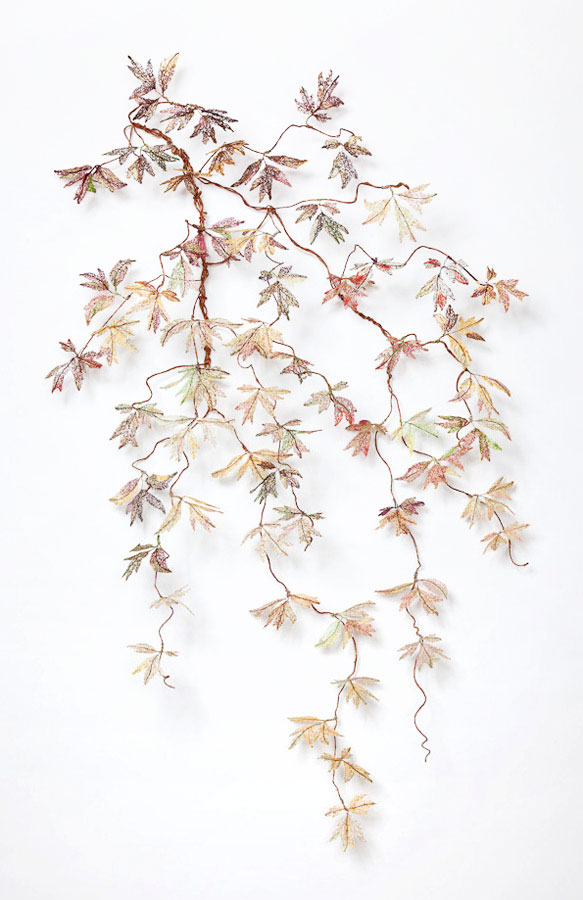Thread
Since moving to a wooded area of El Sobrante two years ago, my work has changed to incorporate horticultural imagery, a reflection of my new surroundings. I began observing the wide variety of plants and leaves and using them in my work. Fauxliage: No Birds Sing for several reasons. The curved and elongated shape of the leaf is aesthetically appealing to me. The way the leaves are clustered in a downward direction for me evokes a feeling of melancholy. When I researched the history of eucalyptus trees in California, I learned that they were brought by Australians during the Gold Rush and were not ecologically compatible with native plants, trees and animals. Although beautiful and fragrant, the tree is essentially an invasive species that causes damage to a fragile ecosystem.Silent Spring by Rachel Carson. Published in 1962, Silent Spring was the first widely read book on environmental pollution caused by pesticides. Amnesia also incorporates text fragments from Silent Spring . I chose the gingko leaf for three reasons. First, its use in improving memory might serve us well as we remember what Rachel Carson wrote about. Historical amnesia allows the repetition of past mistakes with potentially dire consequences. Second, gingko trees were among the only horticultural survivors of Hiroshima; they are an ancient species and their survival provides hope in a time of ecological devastation. And third, I love the fan shape of the leaves.Lost River and Buckaroo incorporate text from Lost River Buckaroos , a cowboy novel from the 1930s. The fragile ephemerality of the leaves stands in sharp contrast to the violence contained in the text.
